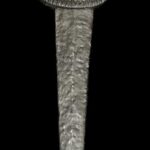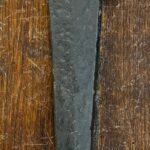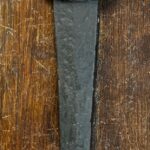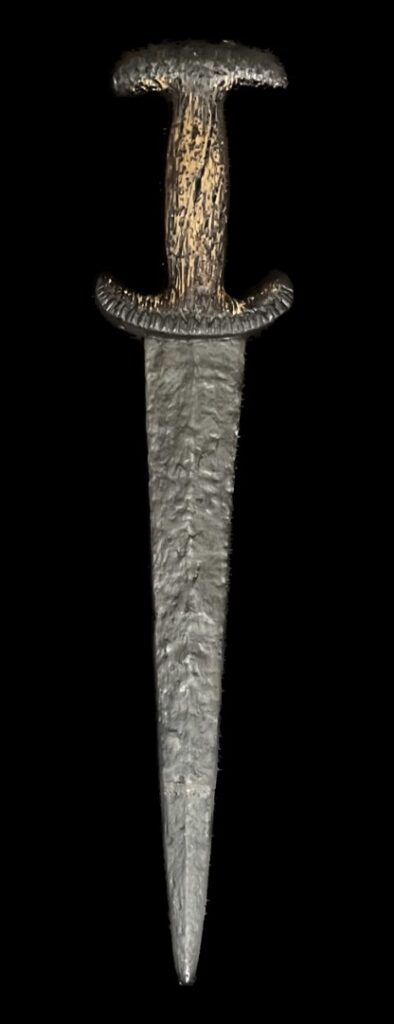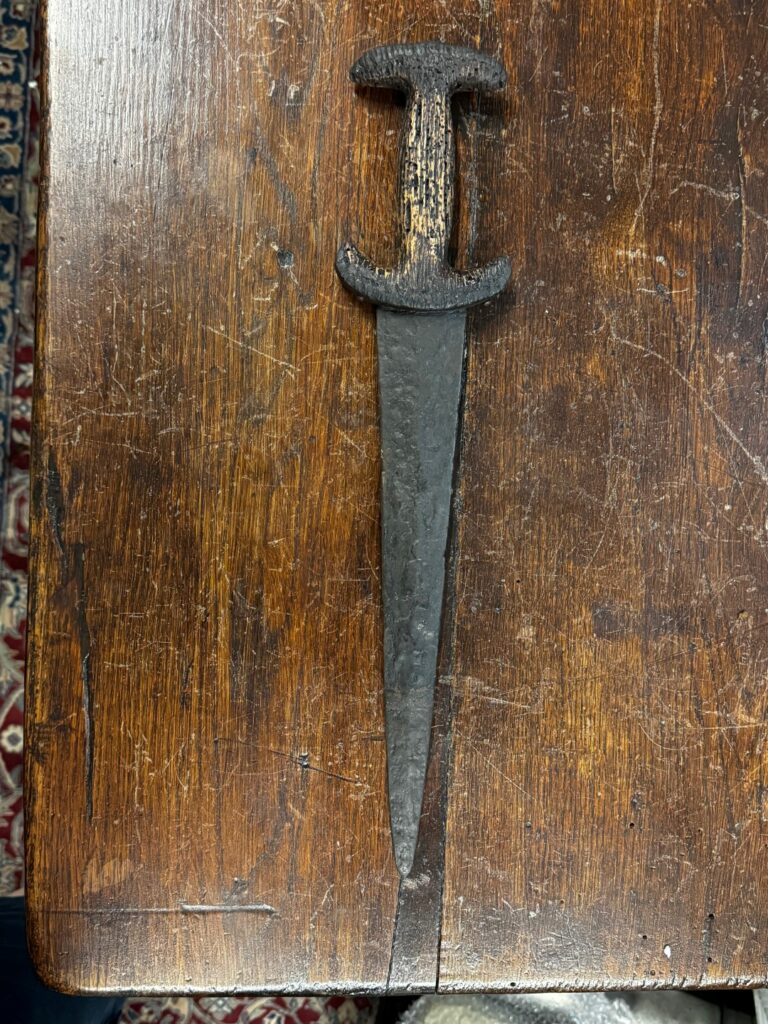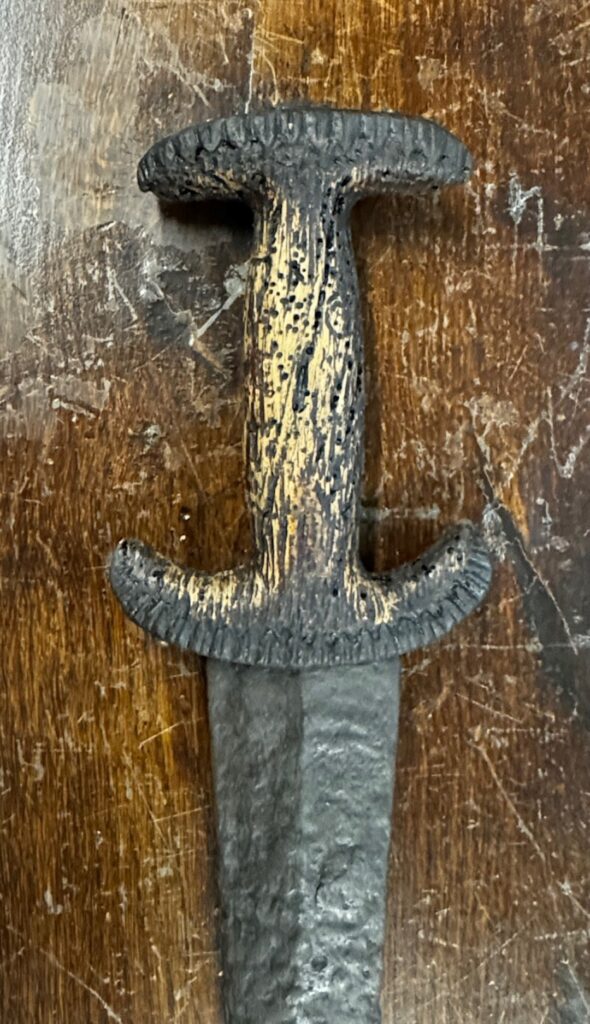1707) MASSIVE IMPRESSIVE SWISS DAGGER CIRCA 1500: The Swiss Dagger was called the Schweizerdolch in German.
Introduction: The first generation of Swiss dagger was the natural progression from the basilard in the 1400s. The basilard’s downward-turned pommel and downward-turned guard now took on the Swiss dagger look. The wooden grip was straight and flat but contoured at the top and bottom to the shape of the pommel and guard. The blade with a slender, diamond section shape with a slight tapering to the tip and a medial ridge extending to the tip. Soon, all that changed in the second-generation Swiss dagger to its most recognizable shape, such as the example under discussion.
Discussion: The second-generation Swiss dagger, such as the example under discussion, evolved into a different variant of dagger. The Swiss dagger now took a slight downward turn on the horizontal steel pommel cap and a slightly stronger upward turn on the guard cap. The wooden grip was now much wider and swelled at the center. However, the grip on most Swiss daggers still contoured at the top and bottom to the shape of the pommel and guard. The grip was masterfully carved and drilled down the center to fit the tang. The entire dagger was secured together by a bent finial. The second-generation Swiss dagger now also had a different blade. The blade was (1) much wider, (2) flattened, and (3) did not taper evenly from the hilt. The blade now had a slower taper for most of its length and a faster taper toward the tip. The blade of a wider diamond section shape with (4), in many cases, a less pronounced medial ridge.
Conclusion: This dagger is massive, well conserved/restored, and makes a loud statement when you see it in person. For the collector on a budget who wants a striking piece on a budget, here it is for under $2K. ACT-NOW!!!*

